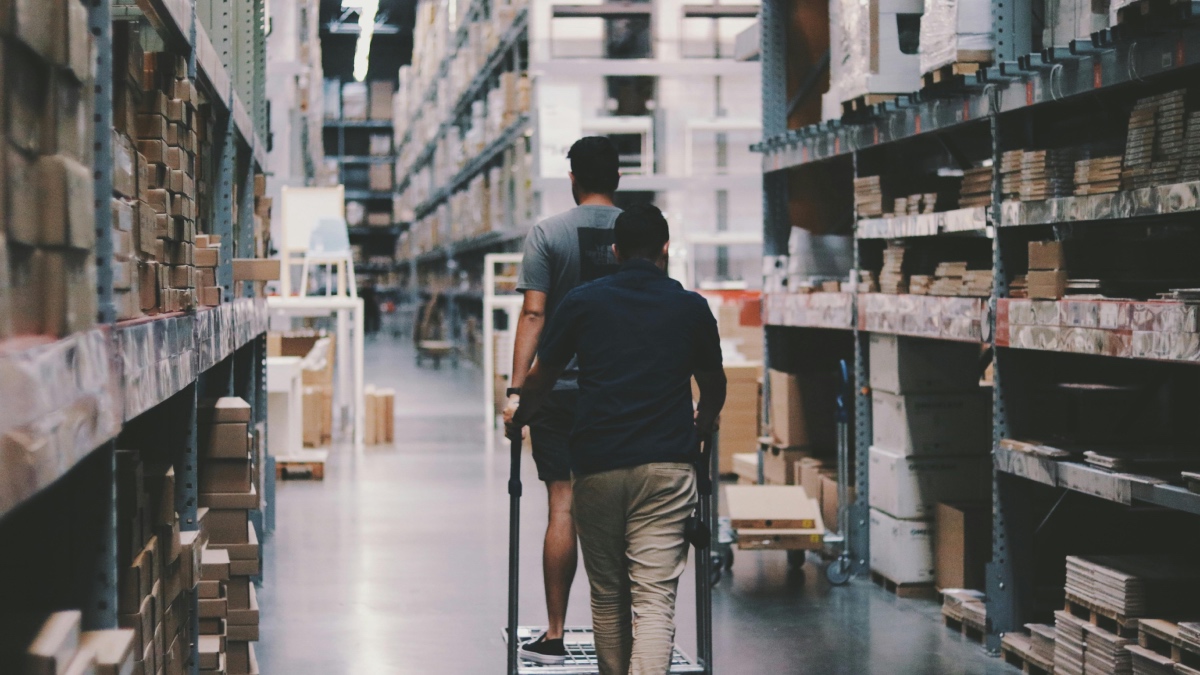Retailers, the game is changing. Consumer expectations are shifting, and businesses are racing to keep up. Delivery options are expanding, omnichannel retailing is on the rise, and larger retailers are setting the pace.
Retailers are locked in a battle for speed, with same-day and even sub-hour delivery becoming the new standard. But with rising costs and logistical challenges, the real question is: how fast is fast enough? One in five retailers is now offering more ways for customers to receive their purchases, but that number jumps to nearly a third among medium and large businesses. These retailers are doubling down on seamless shopping experiences across online and in-store, making convenience a top priority.
The need for speed
Consumer expectations have shifted dramatically. Instant access to entertainment and information has fueled demand for instant shopping gratification. Fast delivery isn’t just a perk—it’s a competitive necessity. Here’s why: shoppers expect their orders almost as quickly as they place them. The less effort required, the more appealing the shopping experience. Retailers are pushing for ever-faster delivery to stand out.
Fast delivery is important, but it’s not the only factor influencing customer decisions. Retailers must balance speed with cost, flexibility, reliability, transparency.
Finding the sweet spot
Not every purchase needs to arrive in hours. Groceries and medications? Yes. A new sweater? Probably not. The best approach? Offer a mix of fast and affordable delivery options—free standard shipping for budget-conscious shoppers, premium express delivery for those willing to pay.
Smaller retailers, however, are finding it harder to keep up. Limited budgets and fewer resources mean they’re slower to adopt new sales and delivery strategies, potentially widening the gap between them and their larger competitors. The question is: will they be able to catch up, or are we seeing a long-term divide in the retail space?
As Australian consumers tighten their purse strings amid rising cost-of-living pressures, retailers are rolling out a variety of tactics to win repeat business, according to a new survey by CouriersPlease. The survey of 203 retailers nationwide highlights a surge in the adoption of loyalty programs and Buy Now Pay Later (BNPL) options—strategies aimed at providing value and flexibility to cautious consumers.
Nearly half (47%) of Australian retailers now use loyalty programs to encourage repeat purchases, while 43% offer BNPL options to attract budget-conscious shoppers. This shift aligns with consumer behavior, as 86% of Australian households actively monitor their finances, with many cutting back on non-essential spending, according to CommBank’s Cost of Living Insights Report.
Retailers who adapt to this new landscape are seeing results. Large businesses are leading the charge, with 65% implementing loyalty programs, while medium-sized retailers are embracing BNPL (49%). Beyond these core strategies, retailers are also focusing on frequent sales (31%), next-day or same-day delivery (30%), and AI-driven customer service enhancements (24%).
Yet, not all businesses are keeping pace. The survey reveals a stark contrast based on business size: every medium-sized retailer surveyed is using at least one tool to drive growth, while 27% of micro businesses report using no specific strategies—likely due to resource constraints.
Regionally, Queensland retailers are the most enthusiastic adopters of loyalty programs (53%) and BNPL (50%), while their counterparts in Western Australia have been slower to implement these strategies.
While 43% of retailers report increased customer loyalty and 29% have seen sales growth, 22% admit their strategies haven’t yet delivered tangible results. The key takeaway? Strategies that prioritize value and convenience are proving the most effective. As CEO of CouriersPlease Richard Thame puts it, “Loyalty programs and BNPL are no longer optional; they’re essential for engaging value-driven shoppers.”
How SMEs can thrive in a competitive market
Be everywhere your customers are
Today’s consumers demand seamlessness across all shopping channels – online stores, social media, and brick-and-mortar locations. SMEs can leverage user-friendly platforms like Shopify, WooCommerce, or even Instagram Shops to establish a presence across multiple touchpoints. The goal isn’t a massive e-commerce operation, but rather a well-designed, accessible digital storefront that connects with the target audience.
Speed and convenience reign supreme
While SMEs can’t always match the scale of next-day delivery offered by giants like Amazon, they can excel in local delivery solutions. Partnering with local courier services, offering same-day in-store pickup, or utilizing services like Uber Direct can provide the speed and convenience customers crave. Offering multiple delivery options caters to diverse needs and can be a significant competitive advantage.
Keep it simple, keep it rewarding
Forget complex, points-based systems. For SMEs, simplicity is key. Straightforward discounts, referral bonuses, and exclusive perks for members resonate strongly with customers. In a world of endless choices, a tangible reward for loyalty can be a powerful differentiator.
BNPL is no longer optional
Buy Now, Pay Later (BNPL) has moved beyond a trend; it’s now an expectation. Offering BNPL options through platforms like Afterpay, ZipPay, or Klarna opens doors to budget-conscious shoppers without burdening the SME with upfront costs. With BNPL becoming increasingly prevalent, businesses that ignore this payment option risk losing significant market share.
Smart tools for small businesses
Artificial intelligence isn’t exclusive to large corporations. SMEs can harness the power of AI through chatbots for 24/7 customer service, automated email marketing, and customer trend analysis. Affordable or even free AI-powered tools like ChatGPT, HubSpot, or Hootsuite can streamline operations, personalize marketing, and free up valuable time.
Optimize for the mobile consumer
With mobile shopping dominating online transactions, SMEs must prioritize mobile-friendly websites. A slow or cumbersome checkout process can lead to abandoned carts. Simple improvements like fast-loading pages, intuitive navigation, and one-click payment options can drastically improve conversion rates.
The race won’t slow down anytime soon. Expect to see more automation, new last-mile solutions, and an even greater focus on personalized delivery experiences. Ultimately, the key isn’t just speed—it’s finding the right balance between fast, affordable, and reliable. Because in the end, the best delivery experience is the one that works for the customer.
Keep up to date with our stories on LinkedIn, Twitter, Facebook and Instagram.
The lines between online and offline, physical and digital, are blurring. What will retail look like when those distinctions disappear entirely? News, advice for retailers, Delivery Dynamic Business



